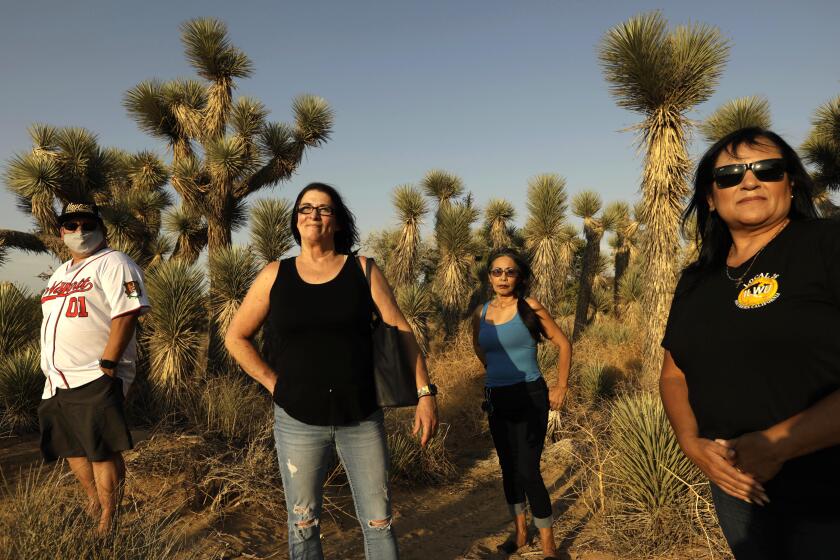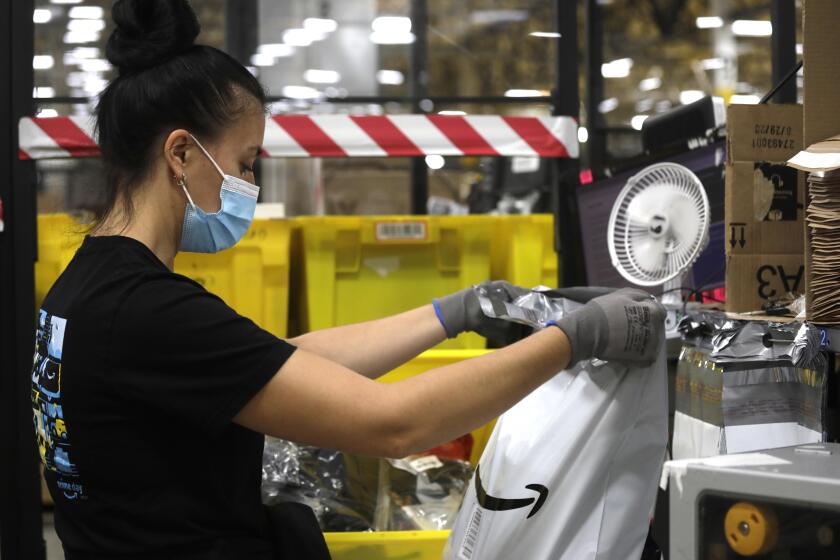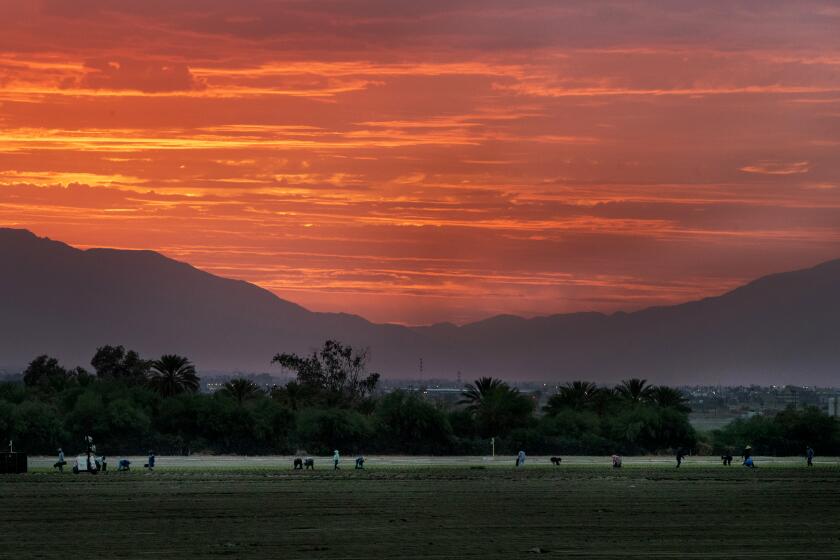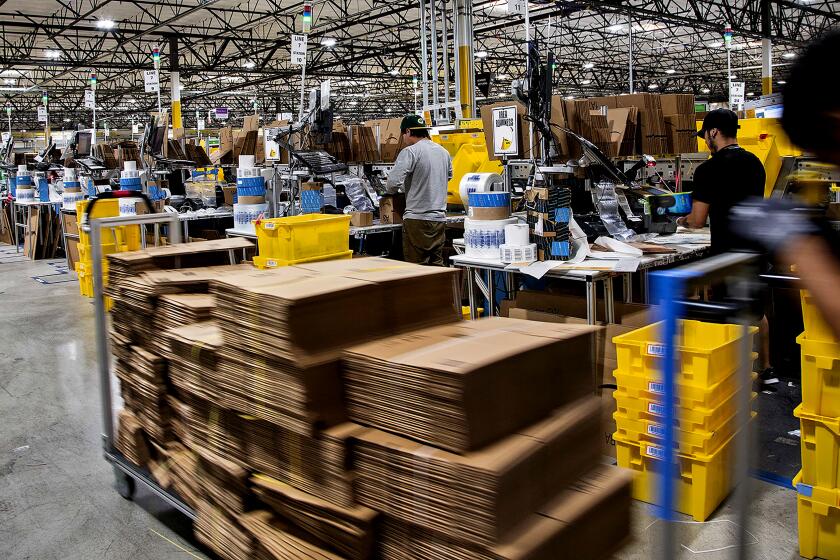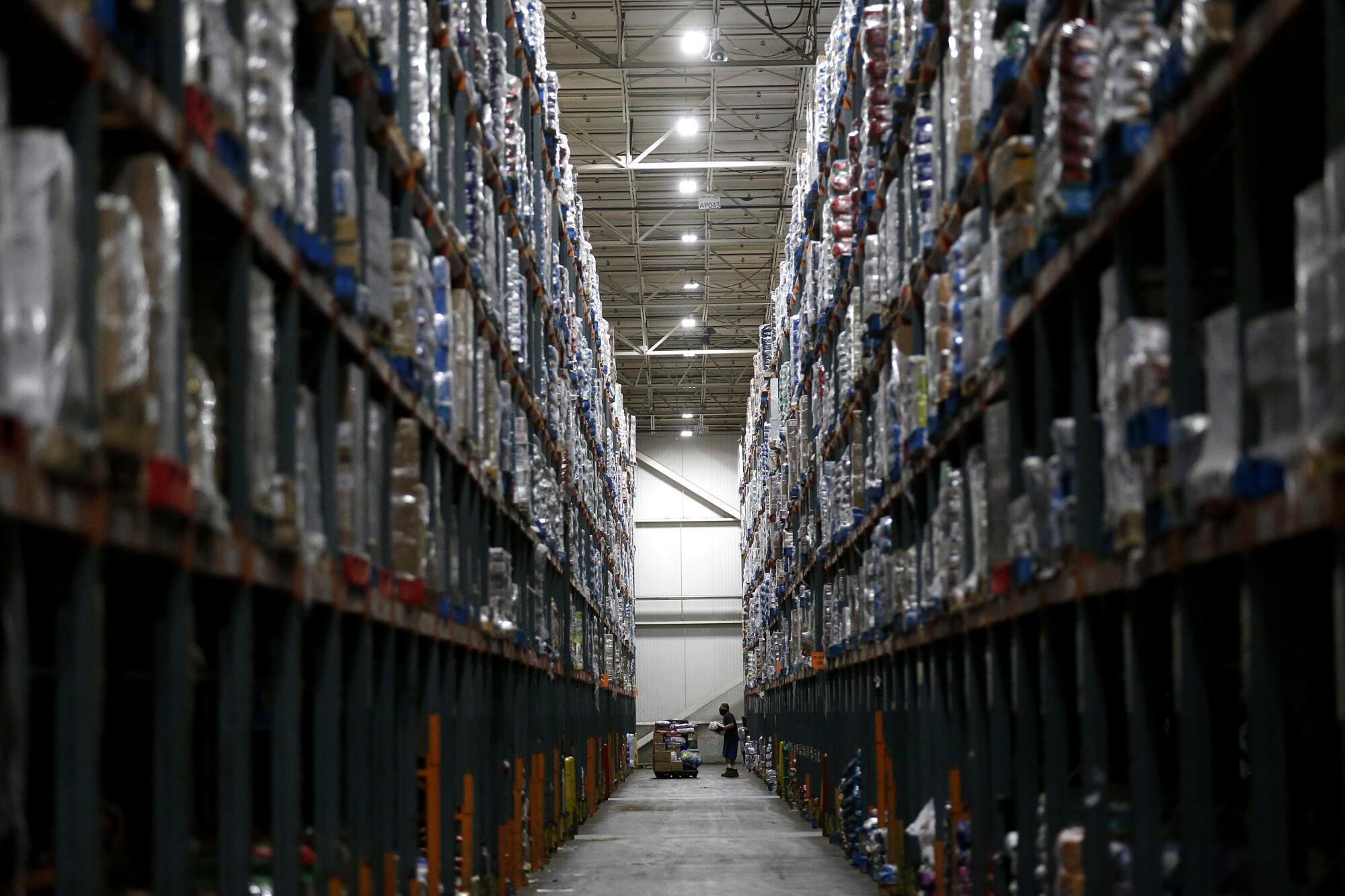
Landmark regulations intended to protect millions of California workers from worsening heat conditions in warehouses and other indoor facilities were left in limbo Thursday after the Newsom administration objected to the cost of the rules.
In a highly unusual move, the board of the California Division of Occupational Safety and Health voted unanimously to adopt new heat illness prevention standards for indoor workers â even after the Department of Finance intervened in the 11th hour over concerns about considerable costs to correctional facilities and other state entities.
The rules â more than five years in the making â would set temperature requirements in warehouses, shipping centers, schools, kitchens and other workplaces that often simmer without air conditioning or sizzle in the hot summer months.
Aggressive and impactful reporting on climate change, the environment, health and science.
Cal/OSHA board members described the Department of Financeâs last-minute objection as âabsolutely outrageousâ and decided to hold their vote anyway. They underscored the urgent need for indoor heat rules to be in place before the first days of summer.
âWeâre in uncharted waters â we just voted for it,â said board member Laura Stock. âWe donât know yet whether thatâs going to have any impact whatsoever. We donât know yet whether thereâs going to be any pressure that is able to be put to bear on the Department of Finance.â
H.D. Palmer, a spokesman for the Department of Finance, said the rules cannot move forward without the agencyâs approval. He rejected board membersâ assertion that they were âblindsidedâ by the departmentâs concerns, and said finance officials did not receive some data related to the regulations until February.
âThis was not a policy-driven decision. This was not an arbitrary decision. This was a decision that was driven by our inability to do our fiscal due diligence and evaluate this data late in the process that had a potential impact to the state,â Palmer said.
While the governor did not weigh in on the decision, Palmer said the impact to state agencies could be âin the neighborhood of billions of dollars.â
The administration is concerned about costs as the governor and lawmakers work to offset a historic budget deficit. The Newsom administration forecast a $37.9 billion shortfall for the upcoming budget year. Other estimates suggest the deficit could end up being twice as high.
Extreme heat is endangering California warehouse workers, who often labor without air conditioning.
California in 2006 became the first state in the nation to establish permanent heat protections for outdoor workers after several farmworkers died from heat-related causes. But the state has been far slower to adopt standards for indoor workers â even as the warehouse industry boomed in places such as the Inland Empire and the Central Valley, where summertime temperatures regularly soar into the triple digits.
Should the vote hold, California would become the second state in the nation to mandate heat protections for indoor and outdoor workers, following Oregon, which established rules for both in 2022 in the wake of a brutal heat wave. There is currently no federal standard regarding the prevention of heat illness in indoor places of employment.
Under the proposed regulations, employers would be required to provide cooling through air conditioners, fans or other devices when the indoor temperature or heat index reaches 87 degrees, or 82 degrees in places where workers wear heat restrictive clothing.
At 82 degrees, employers would also have to provide water and access to cool-down areas where workers can take breaks, and ensure effective means of communication and monitoring for signs of heat illness, among other measures.
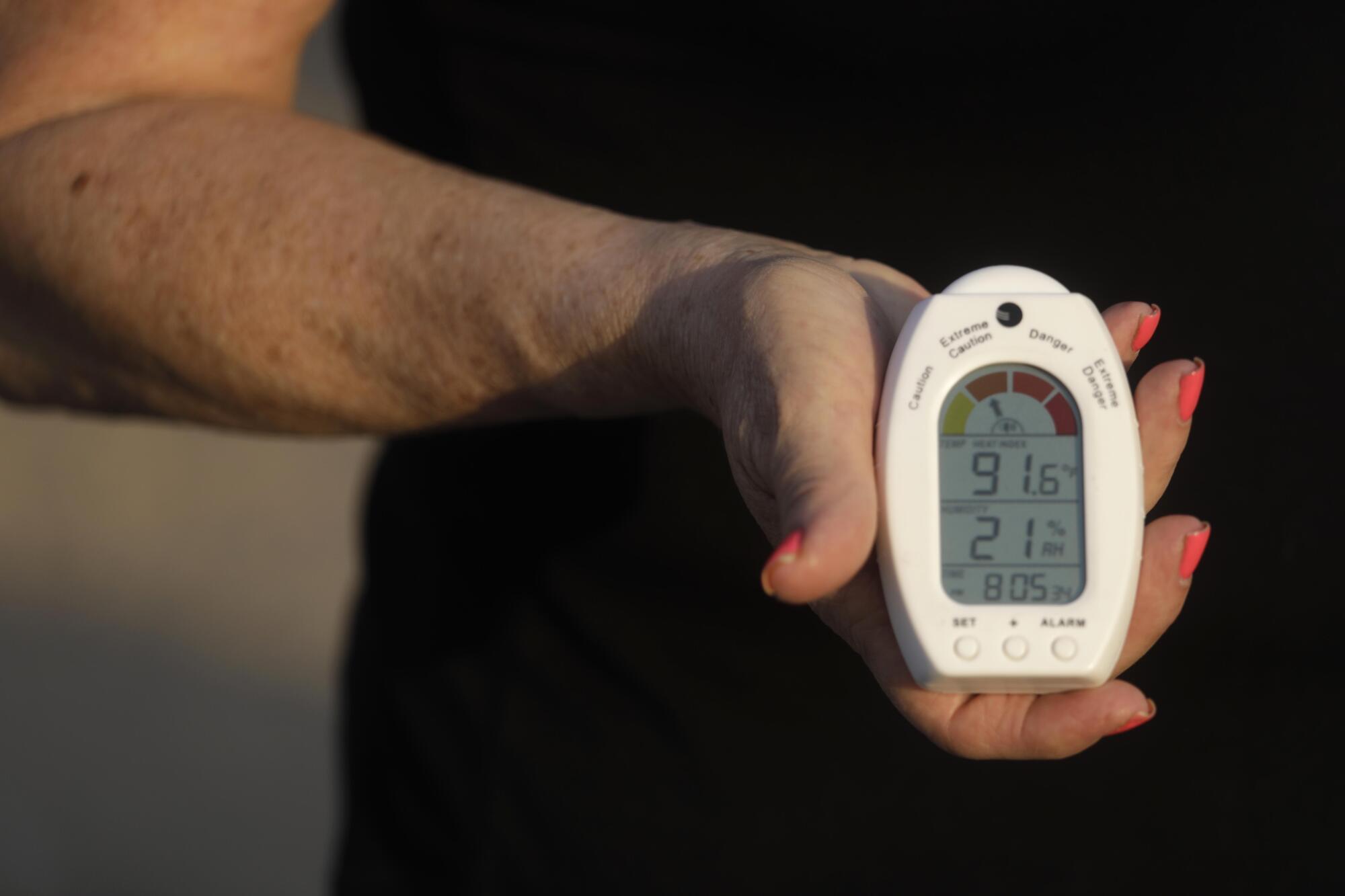
Experts said such guidelines canât come soon enough. The planet experienced its hottest year on record in 2023, and temperatures are expected to continue to rise in the years ahead, primarily due to climate change driven by fossil fuel emissions.
âItâs a prudent action in the age of increasing global warming,â said Louis Blumberg, senior climate policy advisor with the advocacy nonprofit Climate Resolve. âThe planet will continue to warm until the end of the century, even if all greenhouse gas emission reduction targets were met this year.â
But even Blumberg was surprised by what unfolded Thursday. âI consider it a victory with a question mark,â he said.
Alice Berliner, director of the worker health and safety program at UC Merced Community and Labor Center, noted that extreme heat isnât just dangerous â it can also exacerbate chronic conditions such as diabetes, cardiovascular diseases and respiratory diseases.
Whatâs more, âthereâs a real trend toward quotas and pace-of-work demandsâ in many warehouses, packing plants and other such workplaces, she said ahead of Thursdayâs vote. âSo if you think about someoneâs body temperature heating up when theyâre moving quickly, theyâre much more susceptible to hot indoor environments.â
Temperatures continue to rise thanks to climate change. But state officials have moved glacially slow to put protections in place for people toiling during the summer at indoor workplaces like warehouses and factories.
Indeed, workers have described at length how hot conditions can make them sick, dizzy and sluggish on the job, including during a 2023 public hearing conducted by Cal/OSHA.
âIâve personally experienced headaches, nausea, lightheadedness and nosebleeds because of how hot I get when Iâm in my workplace conducting the physically demanding duties of my 10-hour work shifts,â Anna Ortega, a member of Inland Empire Amazon Workers United, in San Bernardino, told hearing members.
âWe are in constant motion. Throughout the day my shirt is soaked in sweat three to four times,â said Sara Fee, another Amazon worker in San Bernardino. âI have felt heat illness myself. I have been nauseous, dizzy.â
Amazon said in a statement that its heat-related safety protocols âoften exceed industry standardsâ and that it is one of only a few companies to provide air conditioning and heating in all of its fulfillment centers and air hubs, including its facility in San Bernardino, where temperatures âhave not exceeded 78 degrees F.â
âWeâve seen the positive impacts of an effective heat mitigation program and believe all employers should be held to the same standard as we have proactively set for our company and our Amazon delivery service providers,â said Maureen Lynch Vogel, a spokesperson for the company.
With a global average temperature of 58.96 degrees, the year was nearly one-third of a degree warmer than the previous hottest year on record, according to officials.
But Ortega and Fee are two of an estimated 5.8 million Californians in high-risk heat industries, including indoor and outdoor workers, according to a map of national heat safety standards from the Natural Resources Defense Council.
Many are low-wage workers, who are five times more likely to be injured on the job due to heat than high-income workers, according to a 2021 study led by UCLA that examined 18 years of California workersâ compensation data.
Thatâs partly because âlower wage workers are more likely to work in dangerous occupations, more likely to live and work in places with greater heat exposure and experience larger marginal increases in risk on hotter days,â the study says.
Between 2001 and 2018, hotter temperatures caused approximately 360,000 additional workplace injuries in California, or roughly 20,000 per year â a figure at least 19 times the annual number shown in workersâ compensation records, the study says. (A 2021 Times investigation found that California chronically undercounts heat-related illnesses and deaths.)
The researchers also found that on days when the temperature was between 85 and 90 degrees, the overall risk of workplace injuries was 5% to 7% higher than on days when temperatures were in the 60s. The risk of injuries was 10% to 15% higher when temperatures were over 100 degrees.
âItâs not only deaths that weâre preventing â weâre preventing workplace injuries [like] falling off ladders,â said Blumberg, of Climate Resolve.
During this monthâs historic heat wave, employees at Amazonâs largest West Coast air freight facility were conducting their own workplace temperature checks.
During Thursdayâs meeting, labor advocates and climate activists condemned plans to remove the heat item from the boardâs agenda and delivered impassioned speeches and chants about the need for regulations.
âFive years of delays have already been detrimental, and it is a matter of life and death for workers as rising temperatures continue to threaten their health and safety every single day,â a representative of the California Labor Federation told the board.
Board Chair David Thomas adopted a defiant tone as he called for the vote, even as he indicated that his job may be at risk.
âThereâs no reason this shouldnât be passed in my mind, because they are right that their lives are the ones that are on the line,â Thomas said. He added later that the vote âwas unanimous because it should have been. I donât know what Finance is going to do, and personally, I donât care. â
He and other Cal/OSHA officials indicated that they were uncertain about whether the vote would stand, and said they would look into possible alternative actions such as holding a special meeting or passing an emergency measure if needed.
Palmer said the stateâs Office of Administrative Law will need the Department of Financeâs approval before it can move forward with the regulations, but he was not immediately certain about the time frame for next steps.
âWe stand ready to do further work and evaluate this, if that is the direction we are given,â Palmer said.
The dust-up comes only weeks after the Florida Legislature approved a bill that seeks to block local cities, counties and municipalities from setting workplace heat protection standards for outdoor workers. Experts said such moves underscore the need for heat rules at the federal level.
âWe absolutely need a federal heat standard. These critical protections shouldnât be an accident of geography,â said Juanita Constible, senior heat solutions advocate with the Natural Resources Defense Council, in an email ahead of the vote.
The federal Occupational Safety and Health Administration began its rule-making process for workplace heat protections in 2021, but it could be several more years before they are enacted.
âIn the meantime,â Constible said, âstates should do everything they can to protect their workers from killer heat â including setting new standards, where possible.â
Times staff writer Taryn Luna contributed to this report.

